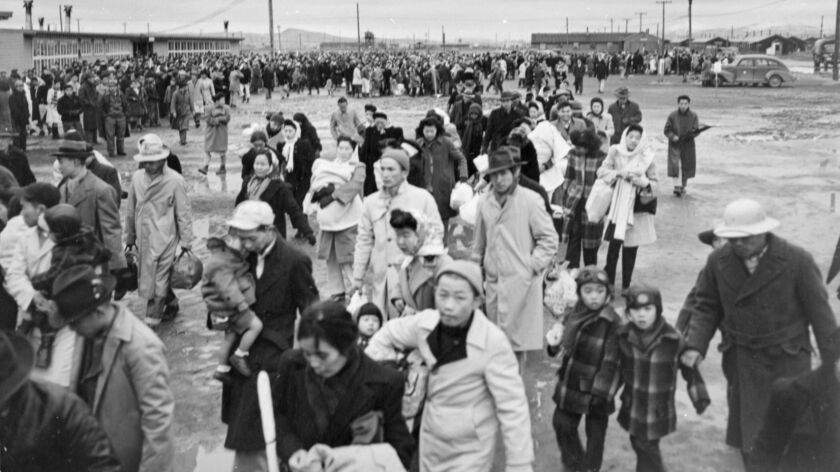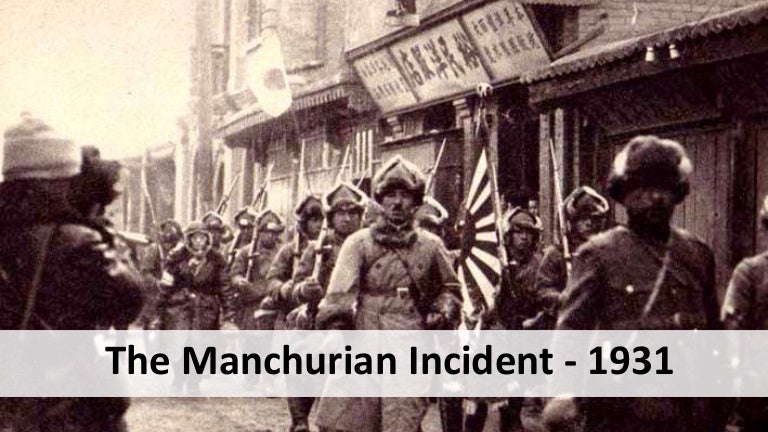Internment camps were scattered all over the interior West in isolated desert areas of Arizona California Utah Idaho Colorado and Wyoming where Japanese-Americans were forced to carry on their lives under harsh conditions. Japanese American internment the forced relocation by the US.

Exactly what theyre called well The Huffington Post says thats important.

American japanese internment camps. Around 120000 Japanese living in the US 80000 of whom were American citizens were forcibly incarcerated in camps. 75 Years Later Americans Still Bear Scars Of Internment Order John Tateishi now 81 was incarcerated at the Manzanar internment camp in California from ages 3. During World War II the US forced some 120000 Japanese Americans into concentration camps for the duration of the war.
In an effort to curb potential Japanese espionage Executive Order 9066 approved the relocation of Japanese-Americans into internment camps. Japanese internment camps were the sites of the forced relocation and incarceration of people of Japanese ancestry in the Western United States during the Second World War and established in direct response to the Pearl Harbor attackThey remain arguably the most notorious example of war-time hysteria driving public policy decisions based on paranoia and fear-mongering than fact-based. 1951 Based on the real-life story of the 442nd Regimental Combat Team a segregated army unit of Japanese American men many of whom served while their families were incarcerated on the home front Go for Broke.
In this regard where were the Japanese internment camps located. Residents used common bathroom and laundry facilities but hot water was usually limited. And the president at the time.
The Americans believed that there were Japanese spies and so that they couldnt gain any information so they put all the Japanese citizens into the camps. Over 120000 Japanese Americans were held in incarceration campstwo-thirds of whom were US-born citizens. An Origin Story 2018 Follows a group of University of Hawaii ROTC students during the tumultuous year after the attack on Pearl Harbor as they navigate wartime Hawaii.
The camps were surrounded by barbed-wire fences patrolled by armed guards who had. Theyre commonly called internment camps but they suggest incarceration camps are more accurate. Volunteers to relocate were minimal so the executive order paved the way for forced relocation of Japanese-Americans living on the west coast.
At first the relocations were completed on a voluntary basis. The World War II-era Amache internment camp in far southeast Colorado brought despair and desolation for thousands of Japanese Americans and Japanese. Japanese American internment - Japanese American internment - Life in the camps.
RemovalRemoval of Japanese Americans from Los Angeles to internment camps 1942. The Injustice of Japanese-American Internment Camps Resonates Strongly to This Day During WWII 120000 Japanese-Americans were forced into camps a government action that still haunts victims and. Conditions at the camps were spare.
Roosevelt signed Executive Order 9066 authorizing the US Army to remove all persons of Japanese ancestry from the West Coast and imprison them without due process of law. Although they had uncomfortable living conditions and were incredibly discriminated by the Americans life in the internment camps were a lot better than life in the Nazi concentration camps. Internees lived in uninsulated barracks furnished only with cots and coal-burning stoves.
On February 19 1942 President Franklin D. Its mission was to take all people of Japanese descent into custody surround them with troops prevent them from buying land and return them to their former homes at the close of the war Japanese American internment. Between 1942 and 1945 a total of 10 camps were opened holding approximately 120000 Japanese Americans for varying periods of time in California Arizona Wyoming Colorado Utah and Arkansas.
The first internment camp in operation was Manzanar located in southern California. Government of thousands of Japanese Americans to detention camps during World War II. Executive Order 9066 was rescinded by President Roosevelt in 1944 and the last of the camps was closed in March 1946.
Between 1942 and 1945 a total of 10 camps were opened holding approximately 120000 Japanese Americans in California Arizona Wyoming Colorado Utah and Arkansas.
The Japanese invasion of Manchuria began on 18 September 1931 when the Kwantung Army of the Empire of Japan invaded Manchuria immediately following the Mukden Incident. They continue to opposde the wa irn 1932 and 1933 despite official suppression of their writings and many arrests.
 The Manchurian Incidend Lon Simulation
The Manchurian Incidend Lon Simulation
Japan see by up Manchuria as a what.

In the manchurian incident the japanese army. This incident is said to have been secretly engineered by a group of Kwantung Army staff. It was the Kwangtung army of the Japanese Empire that invaded. Japans Kwantung Army assumed this to be the work of Manchurian warlord Zhang Xueliang1 and so it launched an immediate attack on Zhangs headquarters of Beidaying.
On February 1932 when the Japanese army seize all Manchuria was known as what. The communists were the only group in Japan which responded to the Manchurian Incident with immediate and unqualified denunciation of Japans actions. Damage to the railway was minimal and the train arrived at its destination safely.
Their occupation lasted until the success of the Soviet Union and Mongolia on Manchurian Strategic Offensive Operation in mid-August of 1945. By signing up youll get thousands of step-by-step solutions to your homework. This section looks into those officers at the center of the military bureaucracy who exerted their.
Fighting escalated briefly in 1932 when skirmishes broke out in Shanghai between. The invasion of Manchuria by the Japanese army began on the 18th of September in the year 1931. Nevertheless the incident resulted in the speedy and unauthorized capture of Mukden now.
Young elite officersgraduates of the Army General Staff College then serving as staff officerswere the instigators. On September 18 1931 the Manchurian Mukden Incident marked the dawn of Japanese military aggression in East Asia. Senior officers tacitly approved of the juniors-overriding-seniors gekokujo tactic as well as the juniors interference in politics.
Yes the ManchurianBattle of Mukden incident did result in Japan signing of the non-aggression treaty with the Soviet Union but nothing changed within the Imperial Japanese Armys tactics or strategy as the result of this battle as the Imperial Japanese Armys high command was in denial about the outcome of the Battle Of Mukden and refused to accept the analysis and recommended changes report and. However communist groups were minuscule divided and also illegal in the early 1930s. The Kwantung Army was responsible for planning the assassination of Zhang Zuolin as well as orchestrating the Liutiaohu Incident.
The Manchurian Incident which began on September 18 1931 with a plot by renegade officers from the Kwantung Army a division of the Japanese Imperial Army to destroy Mantetsu track and blame it on Chinese brigands led to the military takeover of the. Though their influence on the broader left. The correct option in regards to all the options given in the question is option a.
What did the Japanese army do in the Manchurian Incident. After the Manchurian Incident the troop strength was reinforced to suppress anti-Japanese resistance and engage in campaigns to invade northern China and Inner Mongolia. By the following morning the Kwantung Army had routed Zhangs army and occupied Beidaying.
The Kwantung Army then occupied most of Manchuria as this was an act of war. In the Manchurian Incident the Japanese army acted on its own to overrun the whole of Manchuria. Until the Manchurian Incident in 1931 the army was a little over 10000-strong.
The Imperial Japanese Army initiated the Manchurian Incident. Reports on the testimony given by Ken Inukai son of the late premier Tsuyoshi Inukai and Baron Reijiro Wataksuki both of whom testified that extremist elements in the Japanese army planned and carried out the conquest of Manchuria in complete defiance of the wishes of Emperor Hirohito and the civilian governments in power at the time They discussed Araki and Minami as well as the aggressive. September 1931 the Japanese army in Manchuria known as the Kwantung Army staged the Mukden Incident blowing up part of the South Manchurian Railway whilst blaming it on the Chinese.
At wars end in February of 1932 the Japanese established the puppet state of Manchukuo. The Kwantung Army alleged that Chinese soldiers had tried to bomb a South Manchurian Railway train.